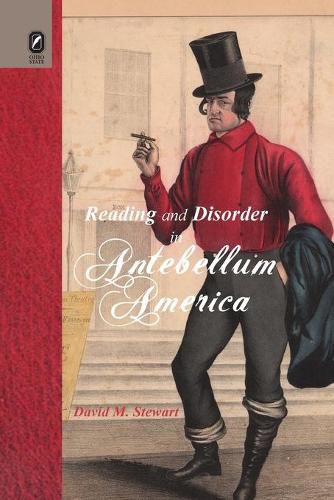Readings Newsletter
Become a Readings Member to make your shopping experience even easier.
Sign in or sign up for free!
You’re not far away from qualifying for FREE standard shipping within Australia
You’ve qualified for FREE standard shipping within Australia
The cart is loading…






This title is printed to order. This book may have been self-published. If so, we cannot guarantee the quality of the content. In the main most books will have gone through the editing process however some may not. We therefore suggest that you be aware of this before ordering this book. If in doubt check either the author or publisher’s details as we are unable to accept any returns unless they are faulty. Please contact us if you have any questions.
Historians of workingmen in the antebellum United States have long been preoccupied with labor politics and with the racism, nativism, and misogyny of their public culture. Reading and Disorder in Antebellum America expands our account of such men by asking questions about their social and bodily lives that are more discrete, yet still engaged with the economic forces that radically altered working life as the market revolution transformed a rural, agricultural nation into one that was commercial, industrial, and urban.
To advance a more capacious view of workingmen, David M. Stewart turns to reading, which is where many first encountered antebellum change as a material fact. Tapping sources from serial fiction, reform tracts, and children’s books, to diet, land use policy, and personal correspondence, Stewart contends that in helping retool a workforce of farmers and artisans to meet the disciplinary needs of capital, the period’s burgeoning new print culture industry developed rhetoric that used emotional coercion to affect conduct. This rhetoric also became the basis for recreational idioms that compensated for the pain of both coercive reading itself and the world such reading produced. In the space between the disciplinary and recreational lives of workingmen, Reading and Disorder revises how we understand them as performative subjects, which is to say, as cause and effect of changing antebellum times.
$9.00 standard shipping within Australia
FREE standard shipping within Australia for orders over $100.00
Express & International shipping calculated at checkout
This title is printed to order. This book may have been self-published. If so, we cannot guarantee the quality of the content. In the main most books will have gone through the editing process however some may not. We therefore suggest that you be aware of this before ordering this book. If in doubt check either the author or publisher’s details as we are unable to accept any returns unless they are faulty. Please contact us if you have any questions.
Historians of workingmen in the antebellum United States have long been preoccupied with labor politics and with the racism, nativism, and misogyny of their public culture. Reading and Disorder in Antebellum America expands our account of such men by asking questions about their social and bodily lives that are more discrete, yet still engaged with the economic forces that radically altered working life as the market revolution transformed a rural, agricultural nation into one that was commercial, industrial, and urban.
To advance a more capacious view of workingmen, David M. Stewart turns to reading, which is where many first encountered antebellum change as a material fact. Tapping sources from serial fiction, reform tracts, and children’s books, to diet, land use policy, and personal correspondence, Stewart contends that in helping retool a workforce of farmers and artisans to meet the disciplinary needs of capital, the period’s burgeoning new print culture industry developed rhetoric that used emotional coercion to affect conduct. This rhetoric also became the basis for recreational idioms that compensated for the pain of both coercive reading itself and the world such reading produced. In the space between the disciplinary and recreational lives of workingmen, Reading and Disorder revises how we understand them as performative subjects, which is to say, as cause and effect of changing antebellum times.